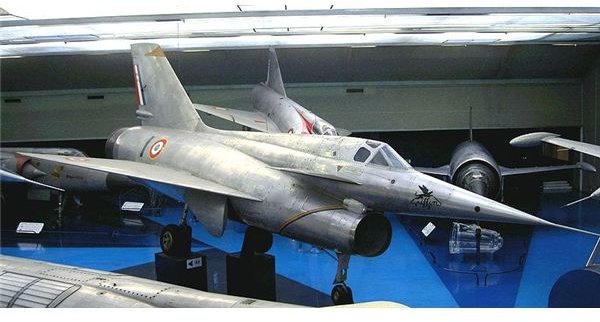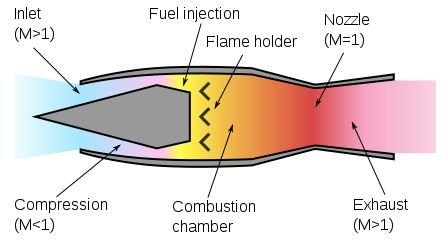Facts on Ramjet Technology - Achieving Supersonic Speeds with the Leduc and Nord 1500 Griffon
How a Ramjet Works
There are numerous facts on ramjet technology that make it a viable form of engine for aviation needs, particularly those aircraft with single engines. When a plane flies through the skies, it creates high pressure in the front and low pressure in the back. A ramjet allows this high pressure to push air into a tube. This air is mixed with fuel creating combustion resulting in forward thrust accelerating the plane to supersonic speeds. A ramjet has no moving parts except for a turbo-pump that injects the fuel.
There are two different types of ramjets: solid-fuel and liquid-fuel. Regardless of the type of fuel, a plane using a ramjet requires a booster that makes the vehicle attain the necessary forward velocity to make the device work. In this way, the problem with a ramjet as an engine is the fact that the plane must already be in flight before the combustion process can occur. Early versions of aviation technology utilizing ramjets needed another form of acceleration before the device could be used. If a fan is added to the ramjet, it can increase the efficiency of the engine. This is called a turbojet.
History of Ramjet Design

Rene Lorin, a French inventor designed the first plans for the ramjet in 1913. After being awarded a patent, he attempted to build a prototype. However, materials were unavailable at the time to build the ramjet. In 1915, inventor Albert Fono in Hungary attempted to utilize ramjet technology to provide additional range for artillery. After the First World War, he proposed an idea for German military to use ramjets on planes.
Boris S. Stechkin and Yuri Pobedonostsev began researching ramjets for projectiles and planes in the late 1920s in the Soviet Union. Using this technology, I.A. Merkulov developed a two-stage rocket in 1939. The same year he further adapted this concept into the first plane to use ramjets. Attaching two of his DM-2 ramjet engines to a Polikarpov I-15, the plane was used as a fighter. With the onset of World War II, he designed a experimental plane that used liquid fuel rockets in conjunction with ramjet engines. Although the airplane’s potential was understood, the project ultimately was canceled with the end of the war.
In 1949, French inventor Rene Leduc successfully constructed the first successful ramjet-powered aircraft, the Leduc 0.10. Using a single ramjet, Leduc conducted the first flights and nearly reached Mach 1.
Later, the French government continued experiments with ramjet technology. The Nord 1500 Griffon was launched in the mid-1950s. Designed to be a fighter for the French Air Force, the plane reached speeds in excess of Mach 2.
Facts on ramjet technology show that they are useful for supersonic speed attainment. However, they are limited in range. Overall, the fact that they require only one moving part, they are reliable and represent one of the earliest forms of aviation engine design.
References
“Ramjet Propulsion” NASA: https://www.grc.nasa.gov/WWW/K-12/airplane/ramjet.html
“Practical Subsonic Ramjet Design” Pulse Jets: https://www.pulse-jets.com/ramjet/ramjet.htm
“French Ramjet Experiment” Century of Flight: https://www.history-of-flight.net/Aviation%20history/jet%20age/ramjet.htm
“Ramjets” Universe Today: https://www.universetoday.com/guide-to-space/spaceflight/ramjets/
“Group for the Study of Jet Propulsion” Mental Landscape: https://www.mentallandscape.com/S_GIRD.htm
Image Sources
Ramjet Schematic. (Supplied by Cryonic07 at Wikimedia Commons; Creative Commons 3.0; https://upload.wikimedia.org/wikipedia/commons/6/6c/Ramjet_operation.svg)
Nord 1500 Griffon II. (Supplied by Mikaël Restoux at Wikimedia Commons; GNU Free Documentation License; https://upload.wikimedia.org/wikipedia/commons/0/05/Nord_1500_Griffon_II.JPG)
